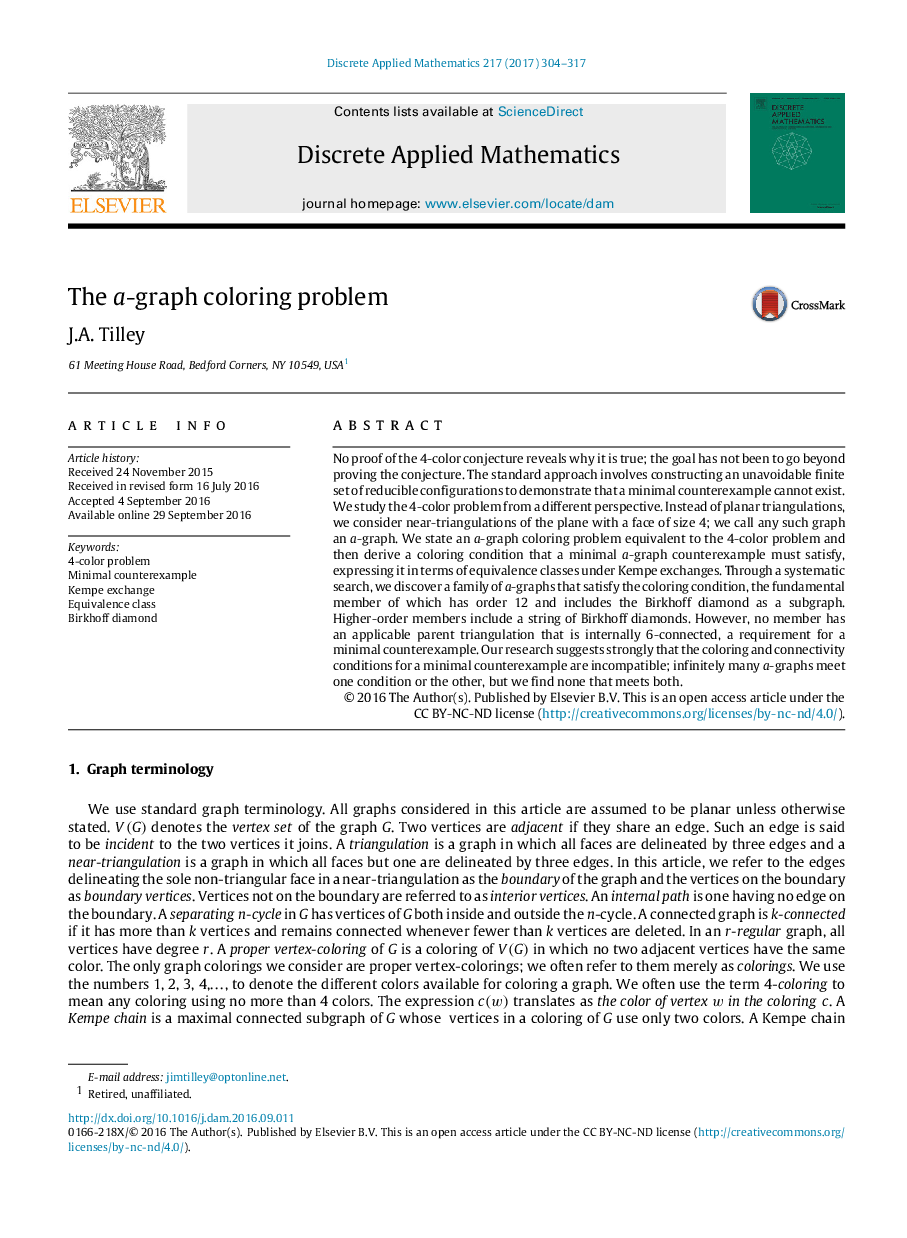| Article ID | Journal | Published Year | Pages | File Type |
|---|---|---|---|---|
| 4949802 | Discrete Applied Mathematics | 2017 | 14 Pages |
No proof of the 4-color conjecture reveals why it is true; the goal has not been to go beyond proving the conjecture. The standard approach involves constructing an unavoidable finite set of reducible configurations to demonstrate that a minimal counterexample cannot exist. We study the 4-color problem from a different perspective. Instead of planar triangulations, we consider near-triangulations of the plane with a face of size 4; we call any such graph an a-graph. We state an a-graph coloring problem equivalent to the 4-color problem and then derive a coloring condition that a minimal a-graph counterexample must satisfy, expressing it in terms of equivalence classes under Kempe exchanges. Through a systematic search, we discover a family of a-graphs that satisfy the coloring condition, the fundamental member of which has order 12 and includes the Birkhoff diamond as a subgraph. Higher-order members include a string of Birkhoff diamonds. However, no member has an applicable parent triangulation that is internally 6-connected, a requirement for a minimal counterexample. Our research suggests strongly that the coloring and connectivity conditions for a minimal counterexample are incompatible; infinitely many a-graphs meet one condition or the other, but we find none that meets both.
